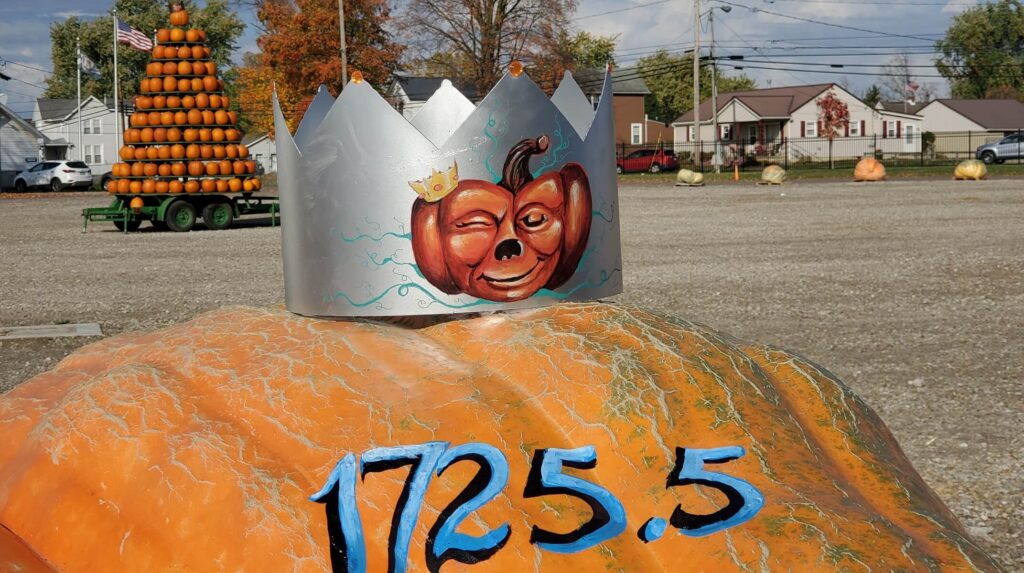Have you ever dreamed of growing a prize-winning pumpkin? It takes care and dedication to grow a massive fruit-bearing plant that can give you the pumpkin of your dreams! If you know what you are doing from the start, you will have a far better chance of actually winning a prize and months of pumpkin pies!
It all begins with a seed. Well, several of them, actually. You will need to get the highest quality pumpkin seeds available in order to cultivate a true giant. Regular seeds just won’t cut it. In my opinion, one of the best competitive pumpkin seeds is from the Circleville Giant Pumpkin Growers. No other type of pumpkin has won the world championship since the early 70´s, so it’s the seed you want! The easiest place to buy them is during the Circleville Pumpkin Show, which runs this year from October 20-23, 2021.
You will want to start the pumpkin plants indoors. It’s a good idea to plant at least five seeds to make sure you can select the fittest for outdoor growth later on. Start them in regular peat starter cups and take good care of the little fellows, they are the base of all your dreams!
Advertisement - Story continues below
Request advertising info. View All.
Transplanting shouldn’t occur until after the last frost since pumpkin seedlings are very sensitive, but you also shouldn’t wait too long. Try to move them once the roots begin to grow out of the pot. Protect your new plants outdoors by covering them with plastic or glass to keep out wind and cold that could damage them.
Of course, your seedlings will never grow into huge fruit if you don’t plant them in good soil. All squash plants like a very rich, fertilized soil, so if you can start the fall before you plant, all the better! Mix in loads of seasoned manure (cow or horse is best) to get a high-quality soil. Adding lots of rich composted dirt is ideal for your giant pumpkin plant, too.
If you are really serious about growing a prize-winner, you will want to test the soil acidity from time to time. The ideal pH level is between 6.5 and 6.8. Lime will bring the acidity down and sulfur will raise it, so you can adjust the growing plot pH to just the right level. Remember to mix any soil additions thoroughly to get accurate readings.
Once your plants are about 2-2.5 months old, they will begin to produce flowers. Only the female flowers will turn into pumpkins, and the key is to hand fertilize them, so the pumpkins will have as much time as possible to grow before harvest, thus resulting in a bigger fruit. You can do this easily enough by checking which flowers are female (they have a bulge that will become the fruit at their base) and then pick a male flower and brush its pollen onto the fat middle part (the stigma) of the female flowers. Only fertilized flowers will turn into pumpkins. This process is best done early in the morning.
Each vine will likely produce multiple pumpkins, and this is fine in the beginning. However, you will need to choose the fastest growing one at some point and remove the remaining baby pumpkins so that your plant will focus all its resources on your prizewinner. The best way to determine which pumpkin has a good chance of becoming a giant is to measure all your fruit every few days and chart their growth. Select the fastest growing ones that also have a good shape. A poorly formed fruit will probably not grow as large as a nice round one.
While fertilizer is always a good idea, you need to make sure that you don’t over fertilize, since this can actually harm your pumpkin! A good water-soluble fertilizer can be given to the plants a couple of times a week without any problems. Once the fruit starts to get big, you will want to aim for a fertilizer that is rich in potassium to help your pumpkins grow properly. The idea is to keep them gaining at a steady rate, without expanding too quickly and cracking.
With any luck, you will have two or three good candidates by mid-summer and can focus on helping these giants grow. Near the end of the growing season, it is possible for a very large pumpkin to gain up to 25 lbs per day. This requires careful monitoring to make sure the fruit doesn’t break away from the stem or crack itself open.
Following these guidelines, you should be able to get a huge pumpkin by fall. While some beginners end up with a 500 lb fruit, you can expect a smaller one for your first year. Next year, with experience on your side, you can go for an even bigger pumpkin!
While at the Pumpkin Show, stop by and visit one of the pumpkin growers at the “Pumpkin Tower” near Court and Main Streets. They can not only offer even more advice and guidelines to help your giant pumpkin journey, but you’ll want to pick up a batch of seeds while you’re there.
